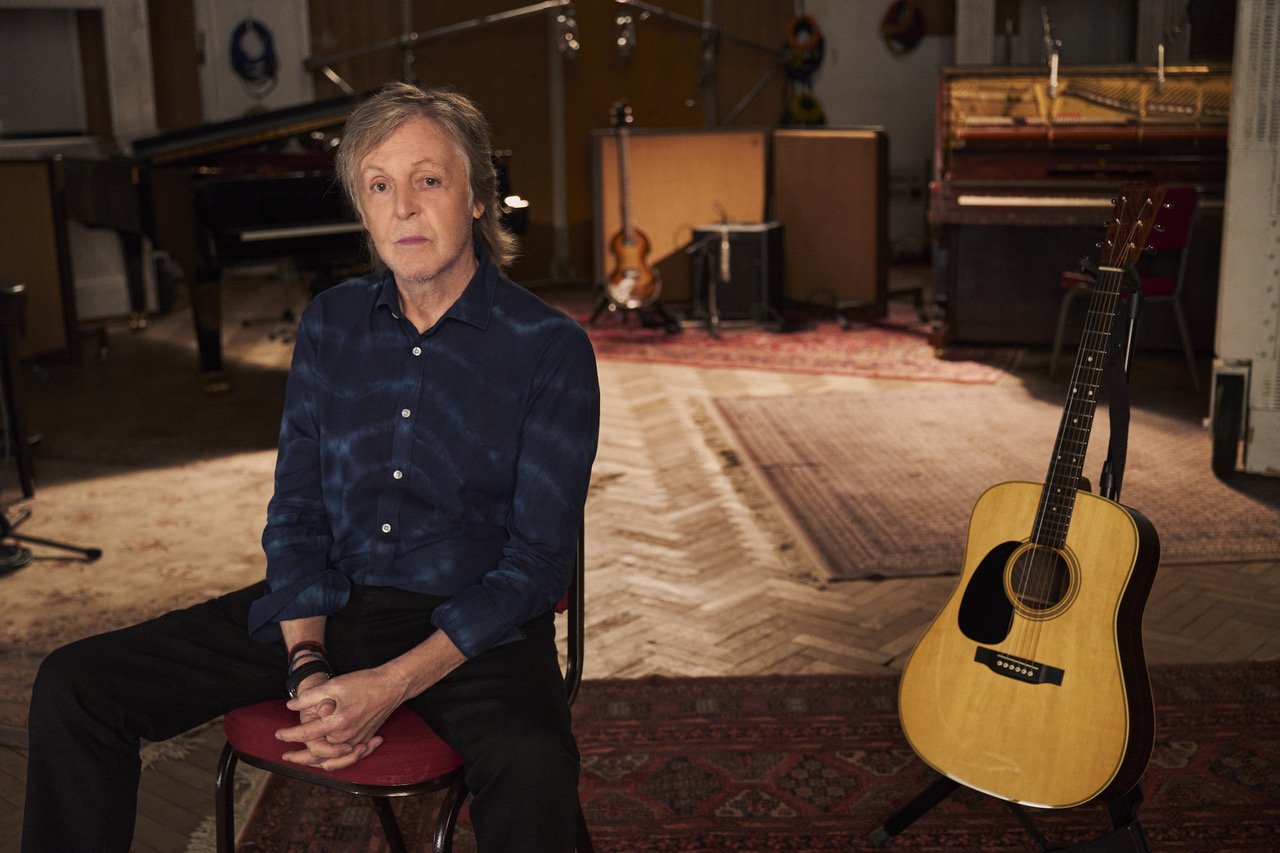If These Walls Could Sing: Mary McCartney’s Affectionate Magical Mystery Tour of Abbey Road Studios
By Karen Gordon
Rating: B-plus
Abbey Road studios was in business long before the Beatles recorded there. But it was The Beatles who put the studio on the map and turned it into a landmark with an almost mystical reputation for many musicians and for Beatles fans.
The Beatles recorded most of their albums there from their beginnings in 1962, when they first teamed up with producer George Martin, until their break up.
And even after that the relationship with the studio continued. Paul McCartney, his wife Linda and their family lived around the corner. Their band Wings recorded there, and the McCartneys were so comfortable that in some ways it was another home for all of them. They brought family, and even their horse Jet into the studio.
The director’s dad’s memories play large in this doc about his studio home-away-from-home.
If These Walls Could Sing, is a remark made by Paul McCartney to the director of the so-named documentary. The director happens to be photographer and filmmaker Mary McCartney, daughter of McCartney and his late wife Linda.
As you might imagine, if your parents were Paul and Linda McCartney, hanging out in Abbey Road studio was just another part of life, a place she spent time as a child, a place connected to her late mother.
For her first full length documentary McCartney looks at the history of the studio through a range of the music recorded there. Although she uses her personal connection to the studio as the premise, If These Walls Could Sing ends up being a worthy history of a building that, for more than 90 years, has seen and withstood changes in music and technology, and still retains the magic that came from what the Beatles accomplished there.
Abbey Road, then owned by EMI Records, and called EMI recording studios, opened in 1931, in a building that was once a three-story townhouse.
In that former townhouse, EMI built a number of studios and post production rooms. But perhaps the most famous image is that of Studio One, purpose-built to house an entire symphony orchestra. In fact, the documentary tells us that the first recording was Sir Edward Elgar recording the London Symphony Orchestra.
The classical dominance started to shift in the ‘50s. Sir Cliff Richard remembers being met with a certain initial unease by the establishment as he went into Studio 2 to record his first ever song, Move It.
But it was the Beatles, initially auditioning there for the late George Martin, who helped shape the sound of the band in the studio.
Abbey Road became an important part of what the Beatles would go on to accomplish. It was a place of comfort, where the various studios and instruments would allow them to expand and explore.
At one point the band, tired of the limitations of Beatlemania, retreated into the studio for months experimenting with instrumentation and recording techniques. And in the end, they emerged with Sergeant Pepper’s Lonely Hearts Club Band, an album that changed pop music and the possibilities of what a pop album could be.
The film uses a mix of archival images, video footage, and audio interviews with Martin, and John Lennon, as well as contemporary interviews with Paul McCartney, Ringo Starr and George Martin’s son Giles, himself a noted producer/engineer.
The younger Martin provides not only his memories but, quite delightfully, takes out the old reel-to-reel tapes, some of them with songs recorded on just two tracks, and moves the faders up and down to play separate tracks of certain songs. There are audio maps of the studio layouts from the time when music was recorded live off the floor.
Although If These Walls Could Sing does not go too heavily into the technical aspects of Abbey Road, it’s a little thrill for audio geeks and Beatles fans to be able to see so much of this history. The film also looks at the technicians, the philosophy of the studio that has made the place such a stand out to this day. Beyond its legendary status as the place the Beatles recorded, it is an active studio, still considered one of the best in the world.
McCartney balances the history of the studio between pop, world music and classical.
The movie also looks at highlights of more modern classical artists who made their mark in Abbey Road, notably a young pianist named Daniel Barenboim and cellist Jacqueline Du Pré, who recorded her final music in the studio. The history there is not lost on the young contemporary cellist Sheku Kanneh-Mason.
In the early ‘80s, Abbey Road became a destination for movie soundtracks. Studio one became a scoring studio. Composer and conductor John Williams recorded a number of film scores there, including Raiders of the Lost Ark
There is, as you’d imagine a lot of time spent on tracking some of the great pop music made at Abbey Road. Elton John and Jimmy Page both worked at the studio as session musicians. Pink Floyd recorded their seminal albums there, as did Oasis. There’s terrific footage of Burt Bacharach recording Cilla Black’s version of the song Alfie.
The personal connection that filmmaker Mary McCartney has to Abbey Road Studios may be the starting point. But If These Walls Could Sing is a good addition to the legacy of British music, and an affectionate look at a studio that is as much a part of music history as any of the artists who passed through its doors.
If These Walls Could Sing, directed by Mary McCartney, featuring Paul McCartney, Ringo Starr, Elton John.
Streams on Disney+, beginning January 6



